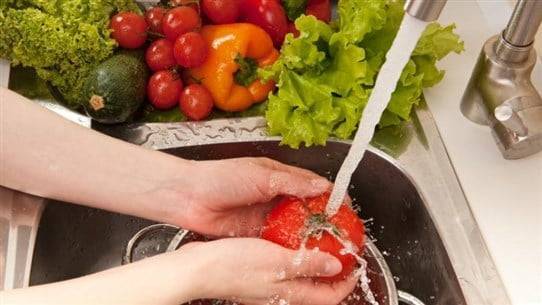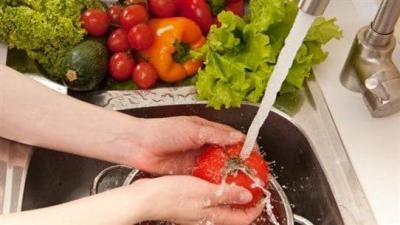After handwashing was essential in protecting against COVID-19, we now find ourselves threatened by cholera infections due to using water for personal hygiene or washing vegetables that may have been irrigated with water contaminated with cholera and other harmful bacteria. This situation leaves citizens confused about how to ensure the cleanliness of their service water tanks and the bottled water they use for drinking and food preparation. One of the hardest parts is dealing with microscopic organisms: bacteria such as cholera and chemicals such as chlorine, whose negative and positive effects on health are not well-known to the average citizen, nor how to use them correctly. The situation is further complicated by the myriad contradictory tips and information circulating in the media and social networks.
**Bacteria Do Not Enter Plants**
The basic information we need to know is that bacteria cannot enter plant bodies. For example, lettuce irrigated with bacterially contaminated water remains clean inside; however, it is never safe to eat before thorough washing and sterilization. In a study conducted by the Microbiology Laboratory at the Lebanese University, some types of plants were intentionally watered with water contaminated with harmful bacteria to ascertain whether they could enter the plant's body. "After examining the plant cells, it was found to be free of any bacteria," stated Dr. Mohammad Azeddine, the head of the study and a microbiology professor, who confirmed that "the presence of cholera inside a plant body is unlikely because plant cells possess two outer membranes instead of one." He clarified that "infection with harmful bacteria generally remains outside our body cells, but what harms us are the toxins they secrete which enter the blood and cells."
Dr. Mohammad Qobar, head of the Food and Drug Laboratory at the College of Health, echoed this, warning additionally about weeds watered with contaminated water. He advises washing them thoroughly with sterilized water, paying attention to the crevices and folds in the leaves, fearing that bacteria might hide there. Qobar concludes with a recommendation to "avoid cold dishes in infected areas, especially salads, until the outbreak is over, while everything cooked at high temperatures is safe."
**The Vinegar Myth**
Therefore, the only solution we have is to sterilize all water—from household service water to that intended for drinking, particularly if we obtain it from open containers or live in hot areas—as well as sterilizing vegetables and fruits that do not have a thick peel that can be removed, like bananas. This raises the following question: What should we use to sterilize fruits and vegetables?
Lebanese people tend to prefer sterilization with vinegar of various types; however, Azeddine explains, "Harmful bacteria prefer low-acid environments, such as cholera, because strong acids do not kill them but slow their growth and reproduction. However, vinegar is not one of these acids because it is diluted and used in small quantities, and if used in concentrated form, it will alter the taste of food." He clarifies that vinegar is effective against parasites, but it does not kill bacteria; hence, he recommends "using chlorine in calculated amounts."
**The Safety of Chlorine?**
Thus, the only solution today, in the absence of any serious efforts by the state to ensure electricity and operate treatment and pumping stations, is to use chlorine for sterilization and killing bacteria. This substance is safe if used in the necessary quantities "without improvisations."
Up until now, scientific authorities have issued strict recommendations to "use unscented household chlorine, at a rate of one drop to sterilize each liter of water," due to the concern over the misuse of chlorine, as it is a toxic substance that harms humans and living organisms in general if used beyond a certain limit. Dr. Rana Shehab, a water treatment expert, warns against "chemical reactions occurring in water after randomly adding chlorine" and advises "cleaning tanks of any sediments before adding chlorine," and "avoiding the use of materials meant for swimming pool disinfection, as they contain hazardous substances and will produce toxic chemicals upon breakdown, in addition to being unsuitable for tanks that hold less water than pools."




